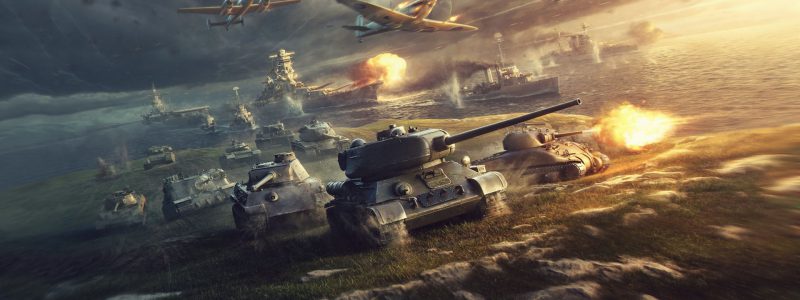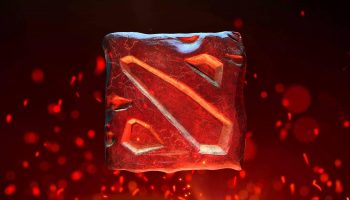Hello everyone! Today is an exciting day indeed, as Wargaming has officially unofficially the vehicles in the upcoming British LT line. Yes, it is tracked (EBR haters can breathe a sigh of relief). This is a minibranch that starts at tier 7, reportedly branching off of the Cromwell, and is the latest in a series of minibranches developed by Wargaming.
This one is a bit unusual, though. Some, were partial branches by design, such as the UDES MT line which was specifically meant to follow the tier 7 Swedish MT. Others, like the French wheeled LT line, are partial lines by necessity; there doesn't appear to be a good way to make that one into a full branch, due to a lack of tier 4-5 candidates. This line is unique in that it very well could be a full branch, but for some reason it isn't. This post seeks to accomplish three goals:
- Provide an example of what a complete line would look like.
- Detail the history of some of these vehicles, as it isn't well-known.
- Discuss why Wargaming is only adding a partial branch.
You may recall that at one point, I created a on how to make a full British tracked LT line, including a LT/MT . (I also made a which was significantly less popular). I did get a couple of vehicles right, and I did correctly identify the line's defining characteristic: very small size. I didn't get the tier 10 correct, but to be honest I like WG's selection a lot more than my own suggestions and am quite happy to see it. I mention this because my info below will be pulling from my original proposal, with a bit of rearranging to fit the theme that WG has selected.
Table of Contents
New Lower Tiers
Tier 2: M1937
Tier 3: Tetrarch
Tier 4: Harry Hopkins
Tier 5: Vickers 13t
Tier 6: FV301
High Tier History
Tier 7: GSR 3301 Setter
Tier 8: LHMTV
Tier 9: GSR 3301 AVR FS
Tier 10: Manticore
Why WG Is Doing It This Way
Suggested Tier 2: Vickers Model 1937
Nickname: M1937
Mass-produced, unknown number of vehicles made
(early turret)
(later turret)
History: One of the more obscure vehicles from the inter-war period, this was part of a series of vehicles designed by Vickers for export. The first model, released in 1933 (and logically named M1933), was in essence a with a different turret and suspension. Next year's M1934 included a new conical turret that could house up to a 13.2mm Hotchkiss. M1936 changed very little, but M1937 introduced yet another turret, this time housing a (40mm) gun or a gun.
There's another related vehicle, sometimes referred to as the M1938 or "Vickers Command Tank", which features a redesigned hull, improved suspension, and a different turret. I am not sure how exactly this vehicle is related to the M1937.
There is little information on these vehicles online, but the few sites I found draw their info from the same source: Tanks of the World, 1915-1945, by Peter Chamberlain and Chris Ellis (2002). A bit more information on the different models can be found and .
Stats: The vehicle had a two-man crew. Weighing a slight 3.8 tons, it had a top speed of 30-40 km/h (depending on the model) and a 90hp Meadows 6-cylinder engine, giving it a very healthy power-to-weight of 23.7 hp/t. Armor was thin, ranging from 4-9mm thick overall. The vehicle was physically quite small, being around 12 feet (3.6m) long, 6 feet (1.9m) wide, and 6 feet (1.9m) tall.
In-game: This is a pretty standard tier 2 LT, probably most comparable to a without the Pom-Pom. Gun depression will be excellent, 10-15 degrees. The 20mm Oerlikon autocannon would be much like other 20mm cannons at this tier: AP/AP, 30mm/55mm pen, 11dmg per shot, and a 10-round clip (even though historically it had a 15-30 round clip). The 2pdr is, well, a 2pdr, probably the QF 2-pdr Mk. IX used by tanks like the . Other than being pretty fast, it's nothing special.
Suggested Tier 3: A17 Tetrarch, Light Tank Mk VII
Nickname: Tetrarch
Note: to reduce confusion, the existing (Russian tier 2 premium LT) should be renamed "Tetrarch LL", to note its lend-lease status.
Mass-produced, 100-177 vehicles total
History: In 1937, Vickers saw it fit to design a successor to their , which despite the similar name would vary significantly in design. Testing commenced in 1938, and the British accepted the vehicle into service, despite not knowing what to do with it; it was insufficient for the light cruiser role, and they were happy with their existing Mark VI light tanks. They found their place in 1942 in the 1st Airborne Division, where their light weight meant they could assist airborne forces by gliding into the battlefield in gliders. Notably, 20 Tetrarchs were flown across the English Channel as part of in the , which successfully landed but did not accomplish much. The vehicle simply lacked the armor and armament needed to be successful, so in 1944 they were phased out in favor of the and the .
In addition to gliding, some Tetrarchs were given , which allowed them to swim. This means that the Tetrarch is possibly the only tank that was able to fight via land, air, and sea in WWII.
For further reading, check out the excellent on the subject. .
Stats: This vehicle had a 3-man crew. Weighing in at 7.6 tons, it had a top speed of 64 km/h and a 165hp Meadows 12-cylinder engine, giving it a P/W of 21.7 hp/t. The armor varied from 4-16mm thick, only sufficient to resist some rifle and machine gun fire. Some vehicles were fitted with the Littlejohn adaptor to give them better armor penetration, and others were fitted with the , to provide close support.
In-game: This would basically be a tier 3 . I think the 75mm is too powerful on this fast a vehicle at tier 3, so instead, its primary armament would be the with the Littlejohn adaptor. Example stats would be AP/APCR, 78mm/130mm pen, and 45/45 dmg (the adapter prevents the use of HE rounds). With this, it would have excellent penetration, which paired with good accuracy, aimtime, gun handling, and DPM would make it very reliable, even if the alpha is rather low. The A18, a nearly-forgotten project, was an improved version of this tank, so if documentation still exists it can be used to give this vehicle more modules.
Suggested Tier 4: A25 Harry Hopkins, Light Tank Mk VIII
Nickname: Harry Hopkins
Mass-produced, 100 vehicles total
History: In 1941, Vickers submitted their design for a successor vehicle to their Tetrarch, which improved on the previous vehicle by adding thicker and better-sloped armor. These modifications reduced the top speed of the vehicle, as well as making the vehicle too wide and heavy to be carried by the General Aircraft Hamilcar. Initially, a whopping 2,410 vehicles were ordered for production, but the vehicle turned out to have major problems, so only 100 vehicles ended up being produced by February 1945. With the decision in 1941 to not use light tanks in the British Army (whatever needs they had were met by the ), these vehicles were instead assigned to the Royal Air Force, who used them for airfield defense. Ultimately, none of these vehicles saw combat.
By the way, was the name of President Roosevelt's chief diplomatic advisor. The more you know!
.
Stats: This vehicle had a 3-man crew. Weighing 8.6t, it had a top speed of 48 km/h, and powered by the same Meadows 12-cylinder engine as the Tetrarch (there are conflicting horsepower values listed) it had a P/W around 17-19 hp/t. The armor was much thicker, at up to 38mm on the front and 17mm on the side, in addition to better sloping. Historically, it equipped the QF 2-pdr, but it likely could've equipped the same guns as the Tetrarch.
In-game: I would give this vehicle a major mobility buff, so that it is just as fast as its predecessor. As the Tetrarch didn't get it, this would get the QF 3-inch howitzer, which is used by the . The primary gun this time around would be the , the 's top gun. I'd give it fantastic gun handling stats (for its tier). In this configuration, it would be rather similar to the .
Suggested Tier 5: Vickers 13t
Nickname: Vickers 13t
Unknown stage of development
Imagine with
History: Sometime in the mid-1960s, Vickers made a proposal for a new 13-ton light tank which amounted to taking the 's hull and pairing it with the turret and weaponry of the . Evidently, the idea did not make it very far, likely because the contemporaneous ), or CVR(T), promised similar firepower at a much lower weight of 8 tons. There isn't any more information on these vehicles online.
Stats: Despite the obscurity of this tank, we have a good sense of how it would have performed. As the name suggests, this vehicle would weigh around 13 tons. It would have either a 3- or 4-man crew. The top speed of 47 km/h was managed by a 240hp Rolls-Royce multi-fuel engine, giving it a P/W ratio of 18.5 hp/t. Armor would be very modest, being 32mm at the thickest. It equipped the 76mm L5A1 low-pressure gun, which was powerful enough to engage any armored non-tank threat.
In-game: We're going to have to buff this tank a bit. First, the top speed will be increased to 60 km/h and the P/W to 27.7 hp/t with the help of a new 360hp engine. The 76mm gun would fit in just fine at tier 5; in fact, I think this would be quite comparable to the at a smaller size.
I'll note here that this would not be chronological; however, WG's own selections are hilariously out of order too, and personally I don't consider chronology to be very important.
Suggested Tier 6: FV301
Nickname: FV301
Prototype, partially complete chassis made
(wooden mockup)
(scale miniature, to help visualize the tank)
History: This project dates back to 1947, when the War Office decided to pursue three standardized series of vehicles: the FV200 series heavy cruisers, leading to the Conqueror; the FV400 series medium cruisers, such as the Centurion; and the FV300 series of lightly armored vehicles. Vickers rolled their existing A46 project into this one; multiple variants were considered, from a tank to multiple self-propelled guns to a number of support vehicles. In 1953, after calling into question the utility of lightly armored vehicles in general, the entire FV300 series was canceled.
Again, limited information on these vehicles is available online. For a bit more info, read and .
Stats: This vehicle had a 3-man crew. Weighing in a 21 tons, it is quite a bit larger than its predecessor, now about the size of an . The armor was up to 50mm thick frontally. Details are otherwise sparse – it was powered by a 500hp engine, giving it a P/W of 23.8 hp/t. It had torsion bar suspension and equipped the 77mm HV.
In-game: I would give it the 77mm HV, but not the exact version used by the Comet; instead, it could get a 77mm HV Mk. I, which fires AP/APCR/HE, 135mm/185mm/38mm pen, 130/130/175 dmg. At this point, the line will start to take on its main characteristic: excellent mobility. With a top speed of 65 km/h, excellent hull traverse, and a new 600hp engine giving it a P/W of 28.6 hp/t, it would be one of the faster light tanks in its tier. This vehicle does stand out for being a bit large; this is because it would also be the start of a separate tier 7-10 branch of Vickers tanks, similar to what I outlined .
History of the Tier 7: GSR 3301 Setter
Prototype, around 17 total constructed
My primary reference for these vehicles is this . This appears to be the CVR(T) prototype pictured , which would be adopted into service under the much better known name "FV101 Scorpion".
The name comes from General Staff Requirement (GSR) 3301, which was issued in August 1964 for the Combat Vehicle Reconnaissance (CVR). I have no idea where the moniker "Setter" comes from.
The CVR took two directions with the separate development of Tracked and Wheeled vehicles. These were to be highly mobile and light enough to be both air-droppable and air-transportable; this allowed for a weight of around 8 tons. Additionally, a maximum width of 2.1m was specified.
The FVRDE (Fighting Vehicle Research and Development Establishment) had been working on a next-generation of vehicles for some time, having just finished the TV 15000 test vehicle, which they used as the basis of a new vehicle to meet this requirement. This featured many innovations, such as aluminum armor and a hydropneumatic suspension. The transmission was adapted from the one used in the Chieftain tank, and reportedly its designer had a nervous breakdown trying to figure out how he had made it work. The mobility test rig was ready in 1966, with a contract for 17 prototypes being issued the following year. Trials began in 1969, with the vehicle ultimately being accepted into service in 1970.
For more info on this (and the rest of the high tiers), read this .
History of the Tier 8: LHMTV
Prototype, one scale model produced
(the concept on the right).
In the late 1950s, FVRDE designed a number of vehicles, including the Lightweight High Mobility Tactical Vehicle (LHMTV), which was to be an air-transportable vehicle. As it was to be carried by the , limiting the width to 2.1m (7 feet) and the weight to a mere 4.5 tons. Many vehicles based on this design were considered, with weaponry varying from a 120mm recoilless rifle to a 105mm howitzer to a turreted 76mm design (the one we have in-game).
I do not believe this particular design was constructed. At some point in the process, a fifth road wheel was added, and with the issuance of GSR 3301, it would ultimately evolve into the Scorpion.
History of the Tier 9: GSR 3301 AVR FS
Unknown stage of development
I don't quite know what this tank is, but we can guess. AVR was the abbreviated name of the Armoured Vehicle Reconnaissance project, which began life in the early 1950s after the issuance of GSR 1106. The only design I know of is than what we have in the game. This was to be the basis of a family of vehicles, including a Fire Support (FS) option. Weaponry choices included a 76mm gun and 105mm gun.
Based on the name, it can be inferred that this is an AVR FS design modified to suit the requirements of GSR 3301. Is this a historical design? I have no idea, but I definitely wouldn't rule it out.
History of the Tier 10: Manticore
Blueprint-only
I'd really like to thank /u/0gopog0 for writing up this on the subject. Do read it – it is in fact the only online source of information on this vehicle there is, besides a few loose comments he made on my original proposal. It is a very real design, albeit one that was never intended to leave the drawing board.
Why WG Is Doing It This Way
As noted in the preamble and evidenced by this post, it is very feasible to create a complete line for this branch, yet WG has opted not to do so. How come?
First, we should acknowledge the possibility that there are in fact lower tiers coming; they just aren't yet ready for supertest, and translation issues have led us to mistakenly think that tiers 7-10 is all we're getting. I don't consider this super likely, but we should keep it in mind.
One person I was talking to (ThatTrafficCone of course) suggested that WG might release a separate tier 2-10 line, one culminating in the Vickers MBTs (more info if you missed the links), or perhaps into something completely different. This is only a temporary measure, and once the new full line is added, it'll be connected to this one. This would be unusual, but it is a definite possibility – certainly the tanks exist to make this happen.
However, there's also the other possibility: WG has no intention of making new tier 2-6 LTs to connect to this line. Why would they do this? I can think of three reasons:
- Ease of grind. The Cromwell is a very popular vehicle, one which many players likely have in their garage right now. It would be very easy to crew this and start grinding for the line. Not only that, but you can basically jump right into tier 7 without having to make your way through a bunch of throwaway lower tier tanks.
- Streamlining the new player experience. New players have a massive learning curve to tackle in this game beyond learning game mechanics – there are dozens of maps and literally hundreds of vehicles whose characteristics have to be learned. Those of us in the higher tiers are used to this due to experience, but it can be a truly daunting task for a new player who is looking at a tech tree and knows nothing about any of the tanks they see. By not adding more lower tiers, WG makes it just a little bit easier for new players to adapt.
- To save time and money. I would assume that it costs the same amount of time to develop a vehicle. Modeling, balancing, testing, etc are fixed costs, especially when the tier 10 is the size of a tier 2 tank. But is the Return on Investment uniform? Certainly not. Players spend more time on the higher tier vehicles, and not just because of the longer XP grind. Only a small portion of the playerbase spends significant amount of time in the low tiers, and it's certainly not the most profitable portion. It makes little sense to spend money developing lower-tier tanks that most of the playerbase will not play for more than a dozen or so battles.
I suspect this is a combination of the second and third reason: a full line is planned SoonTM but this is also an experiment to see how the playerbase accepts this development. What do you think? Are you okay with Wargaming choosing optimization over representation? Feel free to leave your opinion in the comments below!
Source: https://www.reddit.com/r/WorldofTanks/comments/c6sgpb/new_british_lts_expanding_to_a_full_line/







